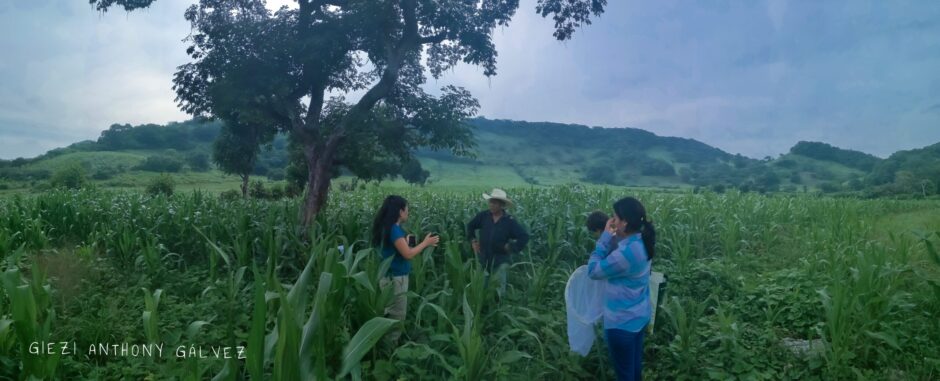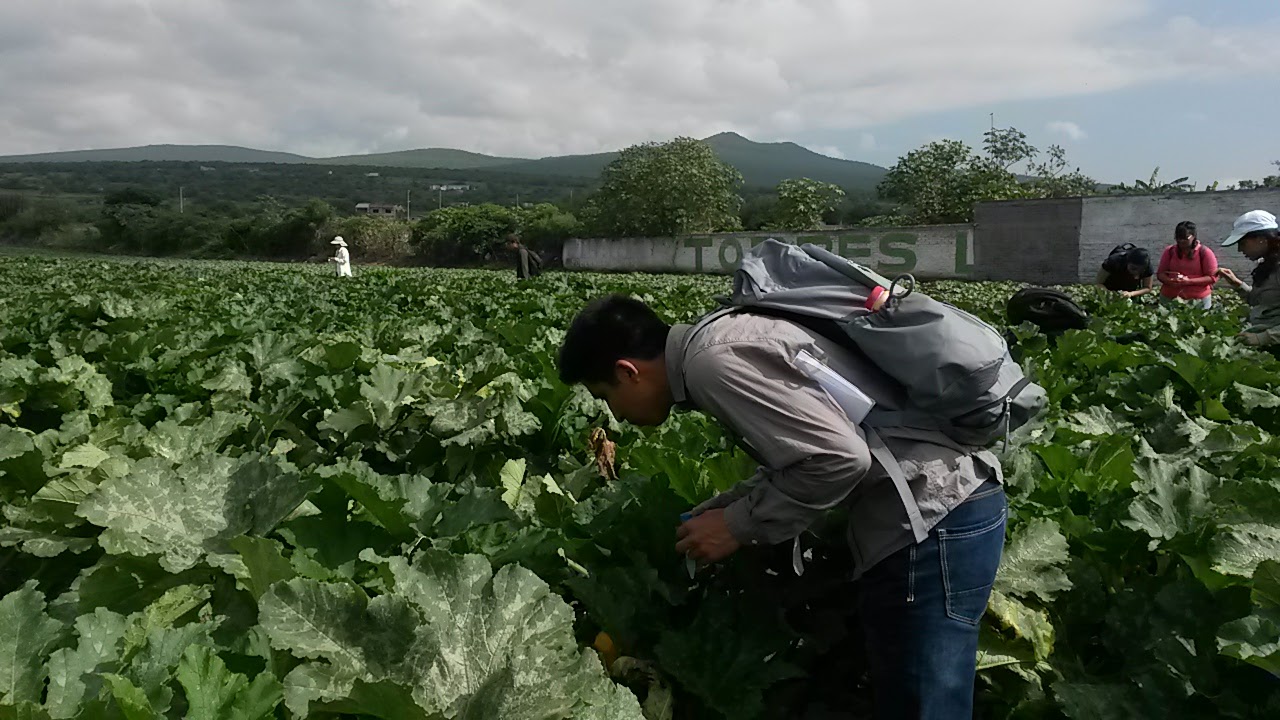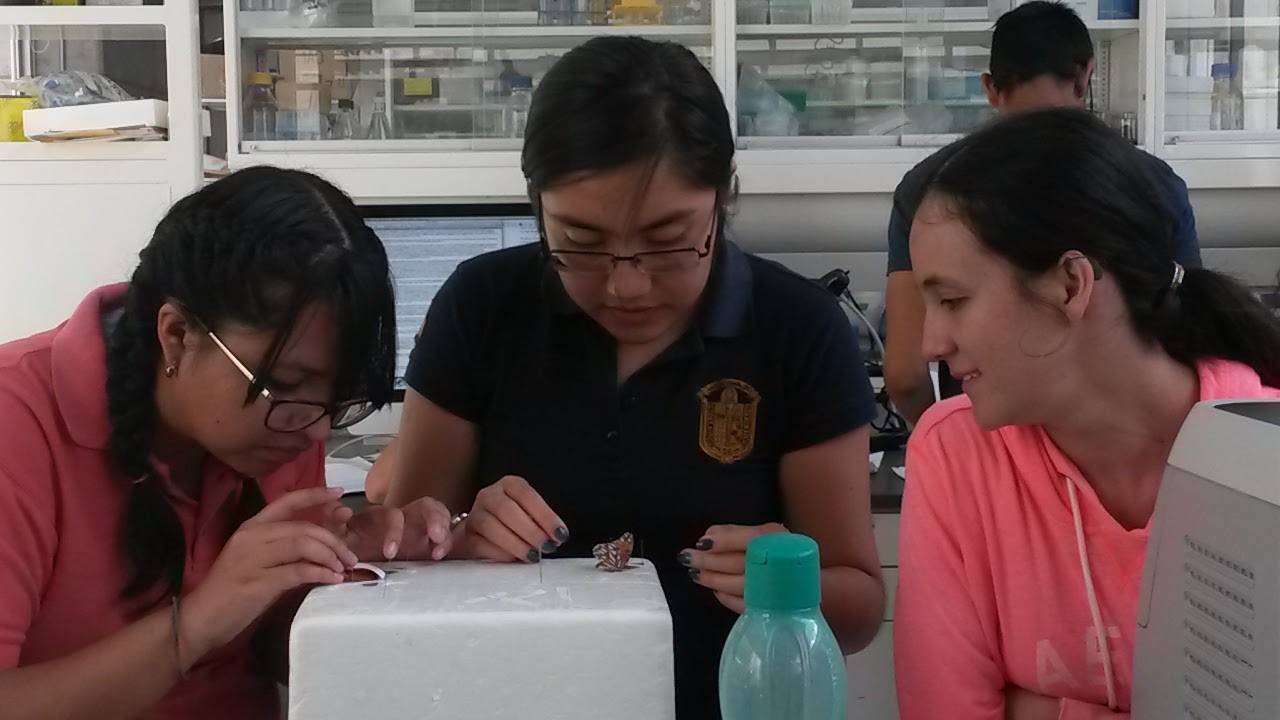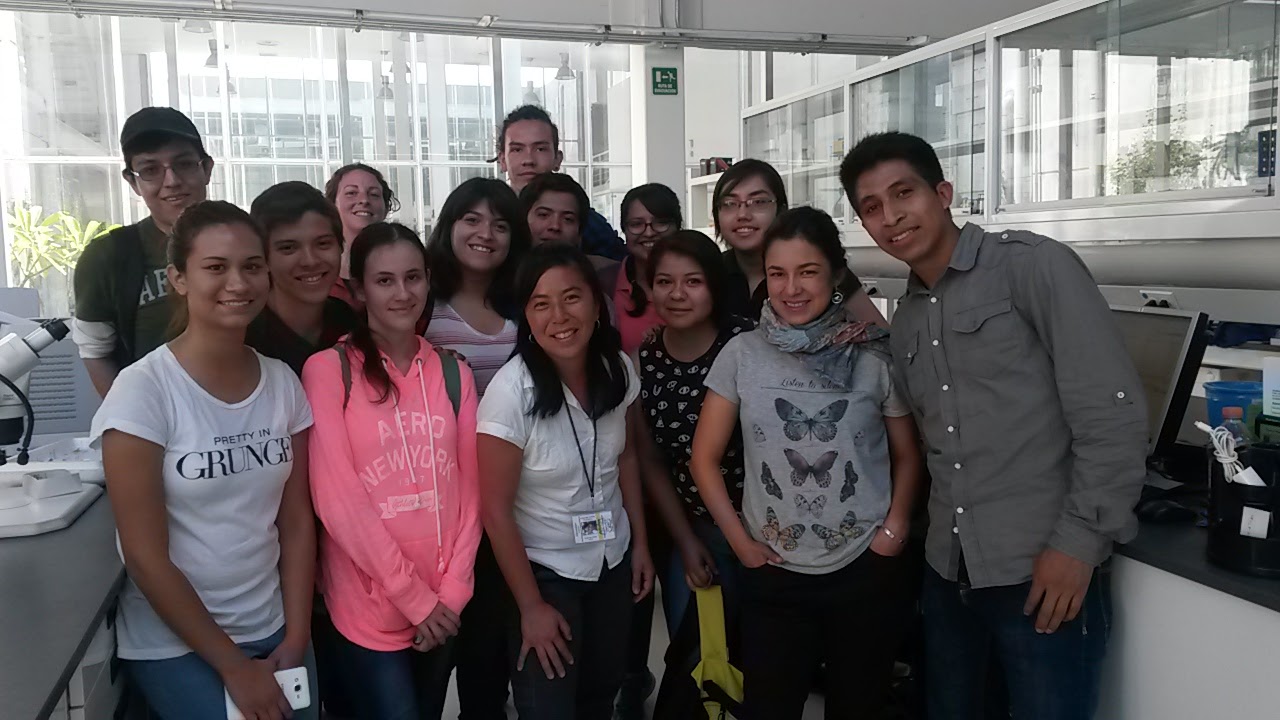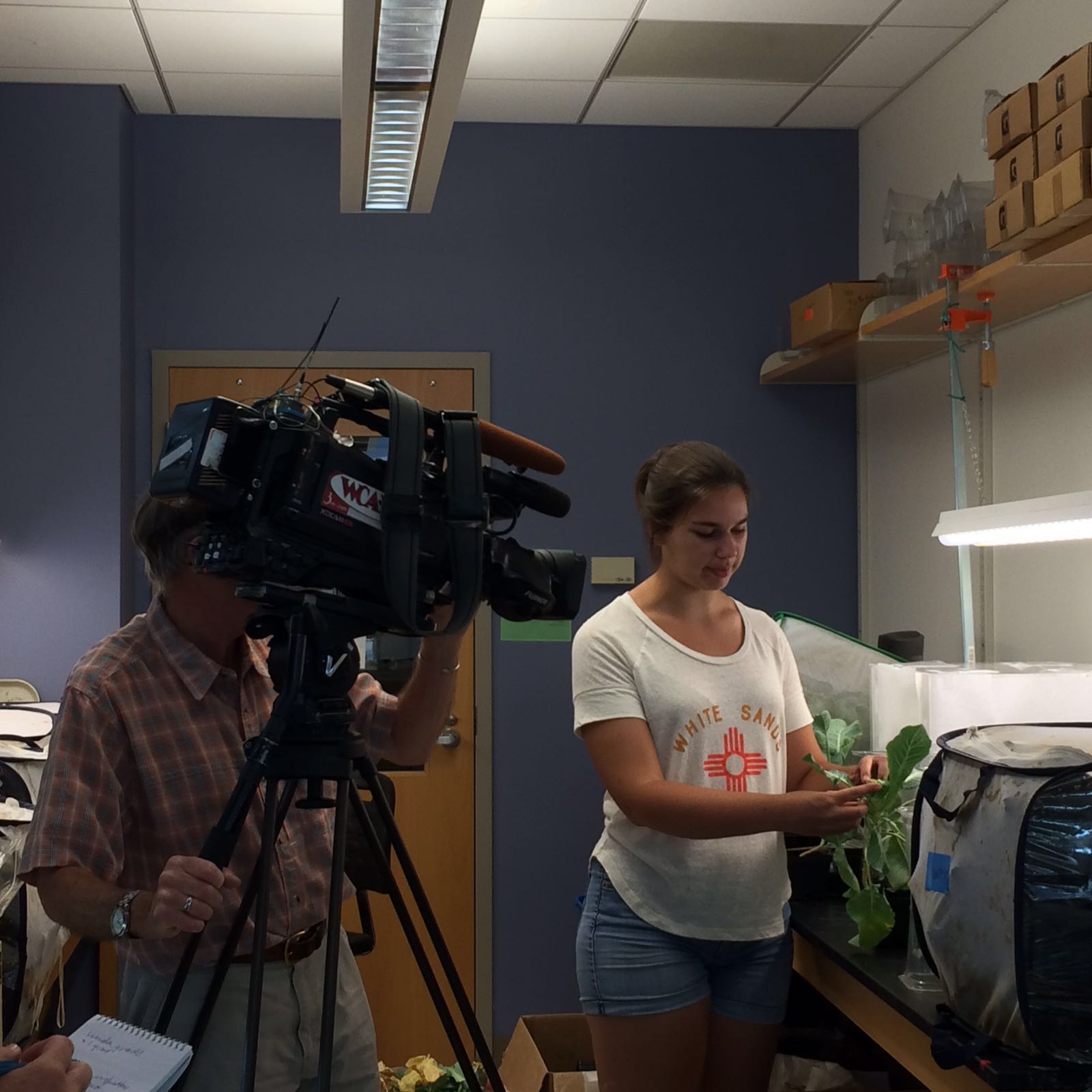At what times of the day are swede midge males most frequently searching for mates?
To answer that question, one must observe the patterns in their activity for 24 hours. Elisabeth and the U. of Guelph technicians set up pheromone traps baited with swede midge pheromone lures in collard, kale, broccoli, and cauliflower fields around an organic farm in New Hamburg, ON and checked the traps each hour for 24 hours. We caught the most midges in the traps in the early morning and evening, which suggests that males are more active at these times of the day.
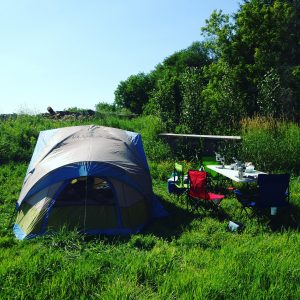
Our campsite at the farm, complete with microscopes for identifying midges on the sticky cards from the traps. Coffee on the camp stove was a must for this experiment!

Perks of staying up all night: You get to enjoy beautiful sunsets and sunrises out in the field.
Why do we care when the midges are active?
We are developing a pheromone mating disruption system to manage swede midge organically. A large quantity of pheromone is required to formulate dispensers that will sufficiently confuse the males so that they cannot find their mates. One major challenge with this system is that the swede midge pheromone blend is extremely expensive to synthesize. One way to reduce costs for this practice is to only release pheromones from programmable dispensers (such as these) in the field when the insects are active. High-tech dispensers in the future could be programmed to turn off in the afternoon and at night, when the midges are resting or not searching for mates, reducing the cost of pheromone inputs for a mating disruption system.
In addition to the practical applications of this type of study, behavioral observations are important for understanding an insect species’ ecology. Timing of pheromone release and flights vary between species to achieve reproductive isolation. Insects may be more active during the times of the day when environmental conditions are more favorable for their survival. Our research group aims to learn more about swede midge and its interactions with the environment and our agroecosystems in North America.
